Abstract
Background: Achieving optimal tumour coverage during craniospinal irradiation (CSI) is a challenge. Whilst several critical organs are at risk of radiation-induced toxicity, if target volume structures like the cribriform plate receive less than 95% of the prescribed dose, tumours could recur.
Aim: This single-institution study seeks to establish the most effective craniospinal radiotherapy amongst 3D conformal radiation therapy (CRT), intensity-modulated radiation therapy (IMRT) and volumetric modulated arc therapy (VMAT) by comparing dosimetry across target volumes, organs at risk (OARs) and total irradiated volume. Time taken for contouring, generation and evaluation of treatment plans, quality assurance and treatment beam delivery is assessed.
Setting: The demographics of patients comprised of six children and one adult who underwent 3D CRT craniospinal radiotherapy at a Western Cape hospital.
Methods: Approval from the Human Research Ethics Committee was obtained. The 3D CRT plan consisted of two parallel opposing lateral fields at the cranial isocentre and a single posterior field at the spinal isocentre. Both the IMRT and VMAT plans comprised three isocentres, one cranial and two spinal, with a total of 15 fields.
Results: Volumetric modulated arc therapy was the most conformal (CI = 0.48) and IMRT the most homogeneous (HI = 0.06). Although the VMAT low-dose bath (58.1%) was highest at 2 Gy, OARs were least exposed with VMAT. The total time taken for VMAT was the shortest.
Conclusion: Volumetric modulated arc therapy was recommended as the most effective CSI technique owing to its superior conformality, least OARs exposure and fastest planning times. Clinical investigation into possible late adverse effects arising from the VMAT low-dose bath should be conducted.
Contribution: This study will establish which of the three radiation therapy (RT) techniques is most effective in the treatment of craniospinal tumours, as well as, which technique offers the fastest turn around time.
Keywords: craniospinal irradiation; 3D CRT; IMRT; VMAT; dosimetry; conformal; organs at risk; low dose bath.
Introduction
Craniospinal irradiation (CSI) is part of a multimodal approach for the treatment of central nervous system (CNS) and brain malignancies. Craniospinal irradiation treatment consists of a prescribed amount of X-ray radiation dose, delivered to the entire cranial-spinal axis, wherever the cerebral spinal fluid (CSF) flows, from the brain through the thecal sac to the cauda equina. The target prescription dose (TPD) is typically 36 Gy, administered in 1.8 Gy per fraction.1
The contemporary multimodal treatment has proven to improve the 5-year event-free survival (EFS) and overall survival (OS) substantially. Reduced-dose CSI (23.4 Gy) improved the 5-year EFS of a study of 379 patients by just over 80%, whilst patients who received higher-dose CSI (36 Gy) experienced a 5-year EFS improvement of up to 70%.2
However, studies such as the Childhood Cancer Survivor Study (CCSS) and the Cardiac and Vascular Late Sequelae in Long-term Survivors of Childhood Cancer (CVSS) point out that despite the advances in radiotherapy treatment, late effects such as cardiovascular diseases, hypothyroidism and neurocognitive decline are major dilemmas.3 Besides the large and irregular target volume, several critical organs are at risk from radiation-induced damages.
A literature review of dosimetry effectiveness amongst 3D conformal radiation therapy (CRT), intensity-modulated radiation therapy (IMRT) and volumetric modulated arc therapy (VMAT) during CSI establishes that VMAT yields the highest degree of conformality and widest low-dose bath at 2 Gy, whilst IMRT is most homogeneous, and organs at risk (OARs) are at the highest radiation risk with 3D CRT.3,4,5,6,7,8,9,10,11
The aim of this study is to determine which of the three radiation therapy (RT) techniques (3D CRT, IMRT and VMAT) will be most effective in treating craniospinal tumours at a Western Cape hospital by evaluating the dose-volume distribution across the planned target volumes (PTV), OARs and total irradiated volume, as well as comparing time taken to contour, generate treatment plans, assure quality and deliver radiation beams per technique. Volumetric modulated arc therapy has been established as the most effective technique for CSI.
Given the challenges during CSI, and late sequelae to OARs and normal tissue, this study forms part of an ongoing quest for a radiation technique that conforms maximally to the tumour, with minimal normal tissue exposure. Measurement of timing parameters sets this project apart from contemporary studies. In South Africa, this study will set the precedence to optimising craniospinal radiotherapy.
Methods
Patients were immobilised using a thermoplastic head and neck mask, with arms relaxed at the sides, and irradiated in supine position. Computed tomography (CT) scans of 3-mm slices, from 2 cm above the cranial apex to 2 cm below the sacrum, were acquired using a Toshiba Aquilion wide-bore CT scanner (Canon Medical Systems Corporation, Otawara, Japan). The CT datasets were exported to the Varian Eclipse treatment planning system (TPS) that was configured for a 6 MV photon beam from a Varian Unique linear accelerator (LINAC) with RapidArc® (Varian Medical Systems, Palo Alto, California, United States).
Intensity-modulated radiation therapy and VMAT plans were developed on the inverse planning software of Varian Eclipse TPS, version 15.5, and their respective dose-volume distribution was calculated using the Anisotropic Analytical Algorithm (AAA), version 15.6. Plan optimisation was achieved with Photon Optimizer (PO), version 15.6.
Contouring
For this study, OARs considered included the brainstem, hippocampus, optic nerves, eyes, lenses, optic chiasm, cochlea, parotids, thyroid, lungs, heart, liver, oesophagus, spleen and kidneys. Because of the fixed beam arrangement with 3D CRT, only central OARs were contoured as peripheral structures were unaffected by dose. Without beam modulation with forward planning, the dose to many OARs could not be modulated or decreased. With IMRT and VMAT, beam entry at various gantry angles or arcs included peripheral organs in dose regions. Additionally, dose modulation and inverse planning allowed for dose constraint to structures. For the advanced techniques, a complete set of OARs was therefore delineated and included in the study for evaluation.
The 3D CRT clinical target volume (CTV) of the brain encompassed the brain, cranial nerves, meninges and cribriform plate. The spine CTV consisted of the spinal canal from the foramen magnum to the thecal sac S2. For paediatric patients, the brain CTV-PTV margin was 5 mm because of the narrower distance to the outer table of the skull in children and to spare the patients’ scalp follicles. For the spine, a PTV was not delineated, but the posterior beam width was adjusted to include the transverse foramina, and clinical evaluation of anatomical target coverage was employed.1
For the IMRT and VMAT plans, the brain CTV was analogous to that of 3D CRT, and the spine CTV was the spinal canal up to the S2. The brain PTV involved the brain CTV plus a 5-mm margin, and the spine PTV comprised a 1.5-cm margin surrounding the spine CTV.12
Treatment planning
For each patient, three treatment plans (a 3D CRT plan, an IMRT plan and a VMAT plan) were developed. The dose prescription for each plan was a total of 36 Gy administered in 20 fractions of 1.8 Gy each. The PTV dose coverage was planned to be within 95% to 107% of the prescribed dose, as per International Commission of Radiation Unit (ICRU) guidelines.13,14 The dose to the OARs was constrained as per the Quantitative Analysis of Normal Tissue Effects in the Clinic (QUANTEC) guideline. The Eclipse Normal Tissue Objective (NTO) tool and a ring planning aid structure, 5 mm from the PTV and 1 cm in width, were used to reduce the dose to surrounding normal tissues and conform the dose to the PTV.
The 3D CRT plan comprised one isocentre in the brain PTV and one or two isocentres in the spinal PTV, depending on the length of the target volume. The cranial beams consisted of two parallel opposing lateral fields, and the spinal beam consisted of a single posterior field. The spinal field divergence into the cranial field was resolved by a few degrees’ collimator rotation of the cranial field, whilst the treatment couch was kept at 0° and the source-to-surface distance (SSD) was 100 cm. Cold and hot spots at the beams’ junction were controlled by manual junction feathering. This resulted in three plans per isocentre. Effective dose distribution, which is based on beam shaping and orientation, is manually determined by the planner.
The IMRT plan consisted of three isocentres, collinear along the sagittal plane, one in the cranial PTV and two in the spinal PTV. Each isocentre had a set of 5 fields, amounting to a total of 15 fields per plan, as described in Table 1. The isocentres’ positions were chosen such that field overlap was at least 10 cm. Collimator angles of 5° anticlockwise (CCW) and 355° clockwise (CW) prevented overlap of interleaf leakage.
| TABLE 1: Intensity-modulated radiation therapy gantry and collimator angles per field per isocentre. |
A VMAT plan with partial arcs was selected, as this technique minimised the dose to the OARs.3,8 The positions of the three VMAT isocentres corresponded to those on the IMRT plan. The cranial isocentre consisted of 3 fields and each of the two spinal isocentres comprised 6 fields, totalling up to 15 fields, as outlined in Table 2. For IMRT and VMAT, automatic junction feathering was achieved by the optimiser, with a minimum field overlap of 10 cm.
| TABLE 2: Volumetric modulated arc therapy gantry and collimator angles per field per isocentre. |
Plan evaluation
The dosimetry parameters required for PTV evaluation were Dmean, D2%, D95%, D98% and  , where Dx% is the dose (D) in Gy absorbed by PTV volume x (%) and , where Dx% is the dose (D) in Gy absorbed by PTV volume x (%) and  is the PTV volume that absorbed 95% of the prescribed dose. To assess the irradiated body dose exposure, the parameters V2Gy, V5Gy, V10Gy and V20Gy were collected, where VxGy is the volume of irradiated body receiving x Gy of radiation dose. Organs-at-risk dose exposure was evaluated using mean absorbed dose, Dmean, and maximum absorbed dose, Dmax, as per the QUANTEC guidelines. Dose-volume histograms (DVHs) and colourwash gave a visual display of the dose volume distribution across the PTV. Planned target volume dose homogeneity (HI) and conformity (CI) indices were determined using the Kataria formula for HI and Van’t Riet formula for CI, as given in equations 1 and 2:15,16 is the PTV volume that absorbed 95% of the prescribed dose. To assess the irradiated body dose exposure, the parameters V2Gy, V5Gy, V10Gy and V20Gy were collected, where VxGy is the volume of irradiated body receiving x Gy of radiation dose. Organs-at-risk dose exposure was evaluated using mean absorbed dose, Dmean, and maximum absorbed dose, Dmax, as per the QUANTEC guidelines. Dose-volume histograms (DVHs) and colourwash gave a visual display of the dose volume distribution across the PTV. Planned target volume dose homogeneity (HI) and conformity (CI) indices were determined using the Kataria formula for HI and Van’t Riet formula for CI, as given in equations 1 and 2:15,16
TVRI is the target volume covered by the prescribed dose, TV is the target volume and VRI is the total volume covered by the prescribed dose. The statistical significance of all collected data was determined using the Student’s t-distribution test for p-values less than 0.01, that is, within a 99% confidence interval.
Timing comparison
The timing for contouring, planning, evaluating, quality assurance check and treatment beam delivery per fraction was recorded using a stopwatch to log the start and stop of each of these processes for all seven patients. The average duration per process per patient was then computed. The timing measurement for each process is thus an average of the seven patients, and this measurement procedure was repeated for all three RT techniques. The sum of the time taken per process yielded the overall planning and beam delivery times per technique.
Ethical considerations
Ethical approval from the Human Research Ethics Committee of the University of the Western Cape was obtained to conduct a retrospective RT dosimetry evaluation of six paediatric (aged 7–15 years) and one adult (aged 26 years) patients (ref. no. HREC REF: 067/2022).
Results
Planned target volume dosimetry
A one-sample two-tailed Student’s t-test was applied to each measured PTV data for each technique because the sample size is small. The null hypothesis is that the data generated by the TPS are purely random. A p-value of 0.01 has been used to test the null hypothesis against the measured data.
For both IMRT (D2% = 37.05 Gy, D98% = 34.91 Gy) and VMAT (D2% = 37.25 Gy, D98% = 34.91 Gy), the near minimum (D98%) and near maximum dose (D2%) fell within the recommended PTV dose constraints of 95% and 107%.13,14
The statistical significance of the observed values, as outlined in Table 3, indicates that the IMRT/VMAT values are statistically significant (99%) because the p-values for these data are less than 0.01. Hence, the null hypothesis was rejected for these IMRT and VMAT dosimetry values. A two-sample paired Student’s t-test was performed on the VMAT and IMRT PTV data, namely D2%, D95%, D98%. This statistical analysis showed that only the difference between the IMRT and VMAT D2% data was significant. Thus, the lower VMAT p-values did not necessarily imply that the VMAT plan was better than IMRT plan, except for the D2% result.
| TABLE 3: Planned target volumes mean dose and standard deviation. |
With 3D CRT, 2% of the PTV absorbed 38.37 Gy, which is 106.6% of the prescribed 36 Gy, whilst 98% of the PTV absorbed 33.95 Gy, equivalent to 94.3% of prescribed dose. The 3D CRT PTV dose-volume distribution fell outside the recommended PTV dose range by 0.7%. The p-values for 3D CRT data imply that the forward planning technique did not meet the statistical significance (99%) and that the null hypothesis could not be rejected for the 3D CRT values.
Comparing the PTV dose coverage of the three RT techniques, Figure 1 indicates that 2% of the PTV absorbed the highest dose with 3D CRT (38.37 Gy), and 98% of the PTV absorbed the lowest dose with 3D CRT (33.95 Gy). The near minimum dose (D98%) for 3D CRT was less than 95% of the prescribed 36 Gy.
 |
FIGURE 1: Planned target volumes dosimetry for the three radiation therapy techniques. |
|
Besides improved target volume coverage, the CI and HI of IMRT (0.45, 0.06) and VMAT (0.48, 0.07) were superior, as expressed in Table 4. The enhanced HI and CI were attributable to the inverse planning technique that utilises modulated fields to increase dose conformality.1
| TABLE 4: Homogeneity index and conformity index. |
Seravalli et al., who used a single patient in their study, also showed that IMRT (0.7) and VMAT (0.9) were more conformal than 3D CRT (0.6).6 Studenski et al. (10 patients) determined that the target volume coverage by the modern techniques (IMRT = 98.0%, VMAT = 99.1%) was superior to that of 3D CRT (95.6%).4 Similarly, Ozer et al. (11 patients) established that IMRT was the most homogeneous (1.13), whilst VMAT was the most conformal (0.91).9 Whilst evaluating VMAT against 3D CRT, Pollul et al. (6 patients), Chen et al. (2 patients) and Srivastata et al. (4 patients) corroborated that the HI and CI of VMAT were better than those of 3D CRT.3,7,8
Since the IMRT and VMAT PTV data (i.e. D2%, D98%, Dmean) were statistically significant and these same values were used to compute the HI (i.e. Eqn 1), by associativity, the HI is statistically significant. For IMRT and VMAT treatment plans, the TPS automatically calculated the CI, implying that the CI would have similar statistical significance (99%) as the PTV data generated by the TPS. By the same inference, the HI and CI for 3D CRT would be less statistically significant because the p-values generated for 3D CRT PTV data were larger than 0.01.
Low-dose volumes
Volumetric modulated arc therapy generated the widest V2Gy low-dose bath (58.07%), and 3D CRT produced the broadest V20Gy low-dose volume (23.76%), as outlined in Table 5. The percentage of PTV absorbing 95% of the prescribed dose was the highest with VMAT (99.66%) and the lowest with 3D CRT (98.43%). For  , that is, the PTV volume that absorbs 95% of the prescribed 36 Gy, although the VMAT p-values are smaller than the IMRT p-values, a paired Student’s t-test on these two datasets indicates that the difference between the two datasets is not significant. , that is, the PTV volume that absorbs 95% of the prescribed 36 Gy, although the VMAT p-values are smaller than the IMRT p-values, a paired Student’s t-test on these two datasets indicates that the difference between the two datasets is not significant.
This outcome corresponded to the findings by Seravalli et al. whereby the volume absorbing 2Gy was greater with VMAT (62.2%) compared with 3D CRT (35.9%) and IMRT (57.2%).6 Likewise, Srivastata et al. and Ozer et al. confirmed that the low-dose bath of 2 Gy was uppermost with VMAT.8,9 The widespread low-dose bath of the modern techniques emanated from the extensive number of fields, at various angles, that produced a more scattered dose from the gantry head and MLCs.1 With VMAT, the low-dose spread is even wider because of the continuous gantry rotation that generated dose entry from all angles.3
The volume absorbing 20 Gy was predominant with 3D CRT (23.76%) and least with the modern techniques (IMRT = 16.43%, VMAT = 15.54%), in agreement with Ozer et al.’s study whereby the volume absorbing 20 Gy was 20% for IMRT and 17% for VMAT.9
The DVH of Figure 2 confirms that, for dosage lower than 10 Gy, the irradiated body volume was least exposed with 3D CRT. However, above 10 Gy, the 3D CRT volume of the irradiated body surpassed that of IMRT and VMAT.
 |
FIGURE 2: Dose-volume histograms of planned target volumes and total irradiated body for one patient. |
|
Organs-at-risk dosimetry
For all three RT modalities, the optic nerves, optic chiasm and brainstem absorbed more than the prescribed 36 Gy, but less than their respective QUANTEC dose constraints. The recommended dose constraints of 20 Gy for the eyes, 6 Gy for the lenses and 20 Gy for the hippocampi were exceeded for all three RT techniques. However, for the manifestation of eye pathology such as retinopathy, the radiation dose should be greater than 45 Gy, which was not the case for any of the techniques under study.17
In a study by Seravalli et al., the lenses absorbed more than the 6 Gy dose limit, and in Sharma et al.’s study, the left eye absorbed 36.3 Gy with both IMRT and 3D CRT.6,18 Srivastata et al. recorded higher than 20 Gy for the eyes and higher than 6 Gy for the lenses with both 3D CRT and VMAT.8
Gondi et al. explained that radiation toxicity of the hippocampus was central to neurocognitive decline.19 Long-term sequelae, such as endocrine dysfunction, were also mentioned by Sharma et al. and Packer et al.2,18 A VMAT clinical review by Hunte et al. referred to reduced neurocognitive function when the hippocampus was irradiated during the treatment of multiple brain metastases.11 Hence, sparing the hippocampus would lessen the probability of neurocognitive and endocrine dysfunction. In this study, it was difficult to spare the hippocampi since the entire brain was irradiated.12
Except for the right lens, optic nerves, optic chiasm and brainstem, Figure 3 indicates that the VMAT dose to the OARs was the lowest, whilst the dose absorbed by the parotids, thyroid, oesophagus and heart was uppermost with 3D CRT. This observation is confirmed by the DVH of Figure 4. Studenski et al. made the same observation in their 2012 study.4
 |
FIGURE 3: Organs-at-risk dose exposure for intensity-modulated radiation therapy, volumetric modulated arc therapy and 3D conformal radiation therapy. |
|
 |
FIGURE 4: Dose-volume histograms for heart, left parotid and thyroid for one patient. |
|
| TABLE 6: Average treatment planning time and beam delivery time per fraction, as measured for each of the seven patients. |
The parotids, thyroid, oesophagus and heart were at the highest radiation risk with 3D CRT. Whilst evaluating IMRT against 3D CRT, Sharma et al. concluded likewise.18 Chen et al., Pollul et al. and Srivastata et al.’s assessment of VMAT against 3D CRT confirmed that the heart and thyroid dose exposures were the highest with 3D CRT.3,7,8 This study achieved significant dose reduction to the thyroid with VMAT (16.64 Gy) as opposed to 3D CRT (28.27 Gy). Hence, the probability of radiation-induced pathologies, such as hyperthyroidism, is higher with 3D CRT.3
Assessment of the heart volume that absorbed 25 Gy (i.e. V25Gy), indicated that 3D CRT irradiated 39.6% of the heart’s volume, that is, almost four times the 10% recommended limit. According to QUANTEC guidelines, if less than 10% of the heart volume absorbs 25 Gy, the risk of cardiac mortality is less than 1% after 15 years.17 This prognosis does not hold for 3D CRT. However, the modern techniques substantially decreased heart irradiation, precluding risks of cardiac toxicities.
Lung exposure averaged 8 Gy for all three techniques, whilst the lung volume absorbing 20 Gy, that is, V20Gy, was around 19% for 3D CRT, which is below the 20% limit. Pollul et al. explained that reduction of lung toxicities could be achieved by keeping V20Gy less than 30%, which was highly realistic in this study.3
The finding that VMAT and IMRT spared the OARs better than 3D CRT is attributed to the number of subfields or partial arcs and their geometric setup, as well as the TPS optimisation algorithm.1 With 3D CRT, a single posterior spinal field was applied, producing a large rectangular irradiated volume, as shown in Figure 5, that encompassed several OARs anterior to the field. Thus, a higher dose deposition occurred.
 |
FIGURE 5: Colourwash planned target volumes dose distribution. |
|
A colourwash representation, Figure 5, of the dose fluence distribution across the entire PTV for one patient shows that the dose coverage by the modern techniques was more contained within the cranial and spinal PTVs, as opposed to the 3D CRT dose fluence that extended widely across normal tissue, anterior to the spinal PTV, hence the higher OARs dose exposure with 3D CRT.
Timing
On average, 8 h were needed to complete the contouring, planning, evaluation, quality assurance and per-fraction treatment delivery for CSI patients, with the VMAT duration being the shortest by approximately an hour.
Both VMAT and IMRT delineation durations took 2.5 h, in contrast to 1.5 h for 3D CRT, as more OARs were delineated for the modern techniques because of multidirectional beam delivery. Accordingly, the treatment plan evaluation for modern radiation techniques took 15 min longer to verify and approve for treatment.
Generating the treatment plans was faster for IMRT (4.5 h) and VMAT (3.5 h), because plan templates were created for these techniques and loaded as a planning starting point. Planned target volume and OARs objective templates, used in the optimiser, also accelerated the process.
For 3D CRT, the planner must orientate the beams by trial and error until the most acceptable PTV dose coverage was attained. For manual junction feathering, three plans per isocentre were created, plus an additional sum plan that verified whether the three plans aggregated correctly. In addition, the planner must manually ensure that the gap points receive between 95% and 105% of the prescribed dose. Hence, the total time of 4.8 h, on average, was required to produce one 3D CRT plan, and this was greatly reliant on the planner’s experience.
The review of plans on Eclipse was faster for VMAT and IMRT because each consisted of one plan only, whereas 3D CRT consisted of three plans per isocentre plus an additional sum plan.
The quality assurance time for 3D CRT plans was 2 h, compared with about an hour for IMRT and VMAT, because each of the three plans per isocentre for 3D CRT must be quality assured, resulting in a longer time for 3D CRT. The quality assurance included independent monitor unit (MU) verification and plan evaluation, with additional fluence map gamma analysis for IMRT and VMAT.
The total time taken to prepare the VMAT plan before treatment delivery was the shortest by about an hour.
Conclusion
Study limitations were identified. The sample was limited to seven patients only, confining the statistical analysis to a Student’s t-distribution test. The study did not focus on a specific CNS tumour type. The timing measurements excluded the duration for imaging, patient’s set-up and position verification. Since this study was single-centred, centre-specific factors such as QA processes must be considered when the results are appraised externally. Finally, an evaluation of tumour control probability against normal tissue complication did not form part of this study. These limitations should be addressed through further studies.
This study sought to establish the most effective RT technique that would provide maximal tumour coverage and minimal OARs exposure during CSI. Analysis of the outcomes proved that VMAT yielded superior tumour coverage with the least dose exposure to the OARs, whilst reducing planning times by an hour. These results corresponded with previous studies and were attributed to the advanced conformality of the VMAT technique. The literature could not, however, provide clinical evidence of whether the widespread 2 Gy low-dose bath from VMAT is a precursor for late adverse effects.
Volumetric modulated arc therapy should be considered as a feasible alternative to 3D CRT for CSI. The effectiveness of the VMAT technique could potentially improve the survival rate of, especially, paediatric patients. The faster VMAT planning times will improve patients’ turnaround time. A study that verifies the link between the low-dose bath and induction of secondary malignancies, through clinical evidence, would shed light on the theoretical assumption of late toxicities.
Acknowledgements
The authors would like to acknowledge Dr. T. Mkhize, Registrar, Groote Schuur Hospital (GSH), for assistance with OAR delineation; Mrs Janine Vermaak, Radiotherapist, GSH, for assistance with the generation of plans; and Prof A. Nisbet, professor and head of the Department of Medical Physics and Biomedical Engineering, University College London (UCL), for guidance on data interpretation, statistical analysis and as UCL project supervisor.
Competing interests
The authors declare that they have no financial or personal relationships that may have inappropriately influenced them in writing this article.
Authors’ contributions
H.F. was the primary investigator for the project. B.S. assisted with treatment plan generation and data collection as well as manuscript preparation. T.N. performed the target and volume delineation and also evaluated all plans clinically. A.G. conceived and designed this research project, selected the patients, facilitated access to all patients’ data and assisted with plan generation and data collection; she also assisted with treatment plan generation and manuscript preparation.
Funding information
This research received no specific grant from any funding agency in the public, commercial or not-for-profit sectors.
Data availability
The authors confirm that the data supporting the findings of this study are available within the article.
Disclaimer
The views and opinions expressed in this article are those of the authors and do not necessarily reflect the official policy or position of any affiliated agency of the authors.
References
- Halperin E, Wazer D, Perez C, Brady L. Principles and practice of radiation oncology [homepage on the Internet]. 7th ed. Wolters Kluwer; 2018 [cited 2022 Mar 24]. Available from: https://lccn.loc.gov/2018023918
- Packer R, Gajjar A, Vezina G, et al. Phase III study of craniospinal radiation therapy followed by adjuvant chemotherapy for newly diagnosed average-risk medulloblastoma. JCO Clin Cancer Inform. 2006 Sept;24(25):4202–4208. https://doi.org/10.1200/JCO.2006.06.4980
- Pollul G, Bostel T, Grossmann S, et al. Pediatric craniospinal irradiation with a sort partial-arc VMAT technique for medulloblastoma tumours in dosimetric comparison. J Radiat Oncol. 2020 Nov;15(1):256. https://doi.org/10.1186/s13014-020-01690-5
- Studenski M, Shen X, Yu Y, et al. Intensity-modulated radiation therapy and volumetric-modulated arc therapy for adult craniospinal irradiation – A comparison with traditional techniques. Med Dosim. 2011 May;38(1):48–54. https://doi.org/10.1016/j.meddos.2012.05.006
- Fogliata A, Bergstrom S, Cafaro I, et al. Cranio-spinal irradiation with volumetric modulated arc therapy: A multi-institutional treatment experience. Radiother Oncol. 2011 Jan;99(1):79–85. https://doi.org/10.1016/j.radonc.2011.01.023
- Seravalli E, Bosman M, Lassen-Ramshad Y, et al. Dosimetric comparison of five different techniques for craniospinal irradiation across 15 European centers: Analysis on behalf of the SIOPE-BTG (radiotherapy working group). Acta Oncol. 2018 Apr;57(9):1240–1249. https://doi.org/10.1080/0284186X.2018.1465588
- Chen J, Chen C, Atwood T, et al. Volumetric modulated arc therapy planning method for supine craniospinal irradiation. J Radiat Oncol. 2012 Apr;1(3):291–297. https://doi.org/10.1007/s13566-012-0028-9
- Srivastava R, Saini G, Sharma P, et al. A technique to reduce low dose region for craniospinal irradiation (CSI) with RapidArc and its dosimetric comparison with 3D conformal technique (3DCRT). J Cancer Res Ther. 2015 Apr;11(2):488–491. https://doi.org/10.4103/0973-1482.144556
- Ozer E, Çoban Y, Çifter F, Karacam S, Uzel O, Turkan T. Dosimetric comparison of intensity-modulated radiation therapy and volumetric modulated arc therapy in craniospinal radiotherapy of childhood. Turk J Oncol. 2021 Sept;36(1):96–103. https://doi.org/10.5505/tjo.2020.2381
- Teoh M, Clark C, Wood K, Whitaker S, Nisbet A. Volumetric modulated arc therapy: A review of current literature and clinical use in practice. BJR Open. 2011 Jun;84(1007):967–996. https://doi.org/10.1259/bjr/22373346
- Hunte S, Clark C, Zyuzikov N, Nisbet A. Volumetric modulated arc therapy (VMAT): A review of clinical outcomes – What is the clinical evidence for the most effective implementation? BJR Open. 2022 May;95(1136):20201289. https://doi.org/10.1259/bjr.20201289
- Ajithkumar T, Horan G, Padovani L, et al. SIOPE – Brain tumor group consensus guideline on craniospinal target volume delineation for high-precision radiotherapy. Radiother Oncol. 2018 Apr;128(2):192–197.
- International Commission of Radiation Units and Measurements (ICRU). Prescribing, recording and reporting photon beam therapy. J ICRU. Report 50. [cited 2022 May 25]. Available from: https://www.icru.org/report/prescribing-recording-and-reporting-photon-beam-therapy-report-50/
- International Commission of Radiation Units and Measurements (ICRU). Prescribing, recording and reporting photon beam therapy (supplement to ICRU 50) [homepage on the Internet]. J ICRU. Report 62. [cited 2022 May 25]. Available from: https://www.icru.org/report/prescribing-recording-and-reporting-photon-beam-therapy-report-62/
- Kataria T, Sharma K, Subramani V, Karrthick K, Bisht S. Homogeneity index: An objective tool for assessment of conformal radiation treatments. J Med Phys. 2012 Jul;37(4):207–213. https://doi.org/10.4103/0971-6203.103606
- Cao T, Dai Z, Ding Z, Li W, Quan H. Analysis of different evaluation indexes for prostate stereotactic body radiation therapy plans: Conformity index, homogeneity index and gradient index. Precis Radiat Oncol. 2019 Aug;3(1):72–79. https://doi.org/10.1002/pro6.1072
- Emami B. Tolerance of normal tissue to therapeutic radiation. Rep Radiother Oncol [serial online]. 1991; [cited 2022 Apr 11] 1(1):35–47. Available from: https://applications.emro.who.int/imemrf/Rep_Radiother_Oncol/Rep_Radiother_Oncol_2013_1_1_35_48.pdf
- Sharma D, Gupta T, Jalali R, Master Z, Phurailatpam D, Sarin R. High-precision radiotherapy for craniospinal irradiation: Evaluation of three-dimensional conformal radiotherapy, intensity-modulated radiation therapy and helical TomoTherapy. BJR Open. 2009;82(984):1000–1009. https://doi.org/10.1259/bjr/13776022
- Gondi V, Tome W, Mehta M. Why avoid the hippocampus? A comprehensive review. Radiother Oncol. 2010 Dec;97(3):370–376. https://doi.org/10.1016/j.radonc.2010.09.013
|